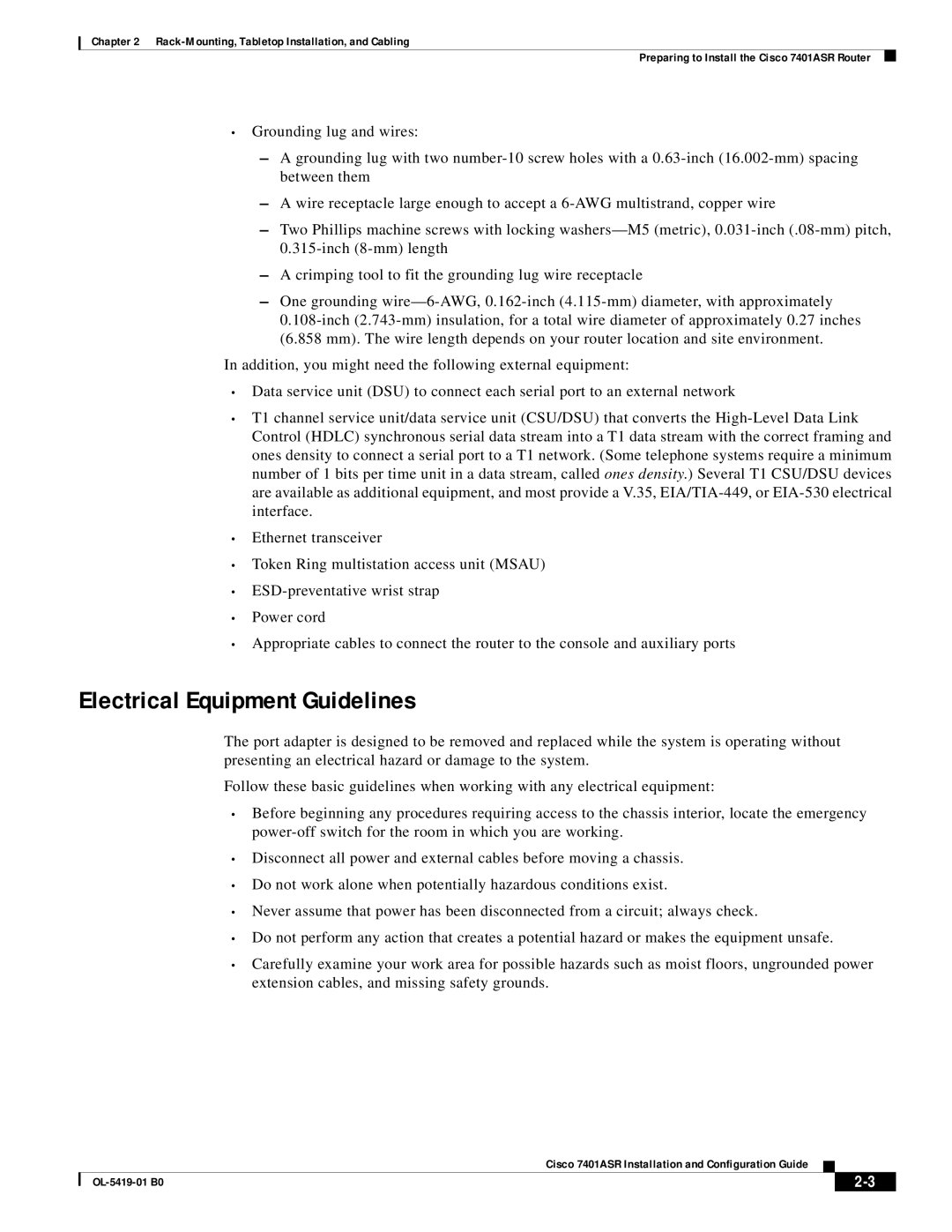
Chapter 2
Preparing to Install the Cisco 7401ASR Router
•Grounding lug and wires:
–A grounding lug with two
–A wire receptacle large enough to accept a
–Two Phillips machine screws with locking
–A crimping tool to fit the grounding lug wire receptacle
–One grounding
In addition, you might need the following external equipment:
•Data service unit (DSU) to connect each serial port to an external network
•T1 channel service unit/data service unit (CSU/DSU) that converts the
•Ethernet transceiver
•Token Ring multistation access unit (MSAU)
•
•Power cord
•Appropriate cables to connect the router to the console and auxiliary ports
Electrical Equipment Guidelines
The port adapter is designed to be removed and replaced while the system is operating without presenting an electrical hazard or damage to the system.
Follow these basic guidelines when working with any electrical equipment:
•Before beginning any procedures requiring access to the chassis interior, locate the emergency
•Disconnect all power and external cables before moving a chassis.
•Do not work alone when potentially hazardous conditions exist.
•Never assume that power has been disconnected from a circuit; always check.
•Do not perform any action that creates a potential hazard or makes the equipment unsafe.
•Carefully examine your work area for possible hazards such as moist floors, ungrounded power extension cables, and missing safety grounds.
Cisco 7401ASR Installation and Configuration Guide
|
| ||
|
|
